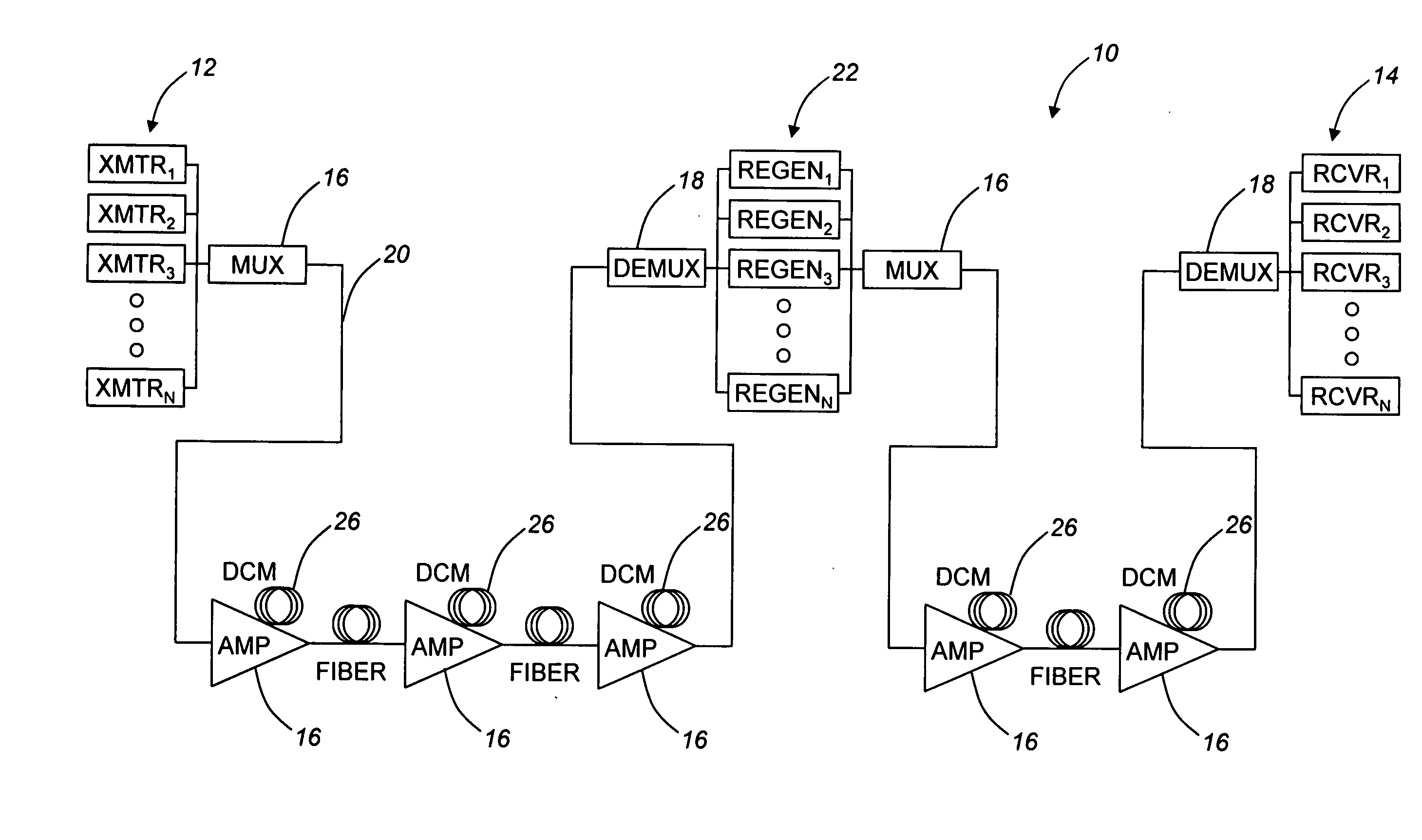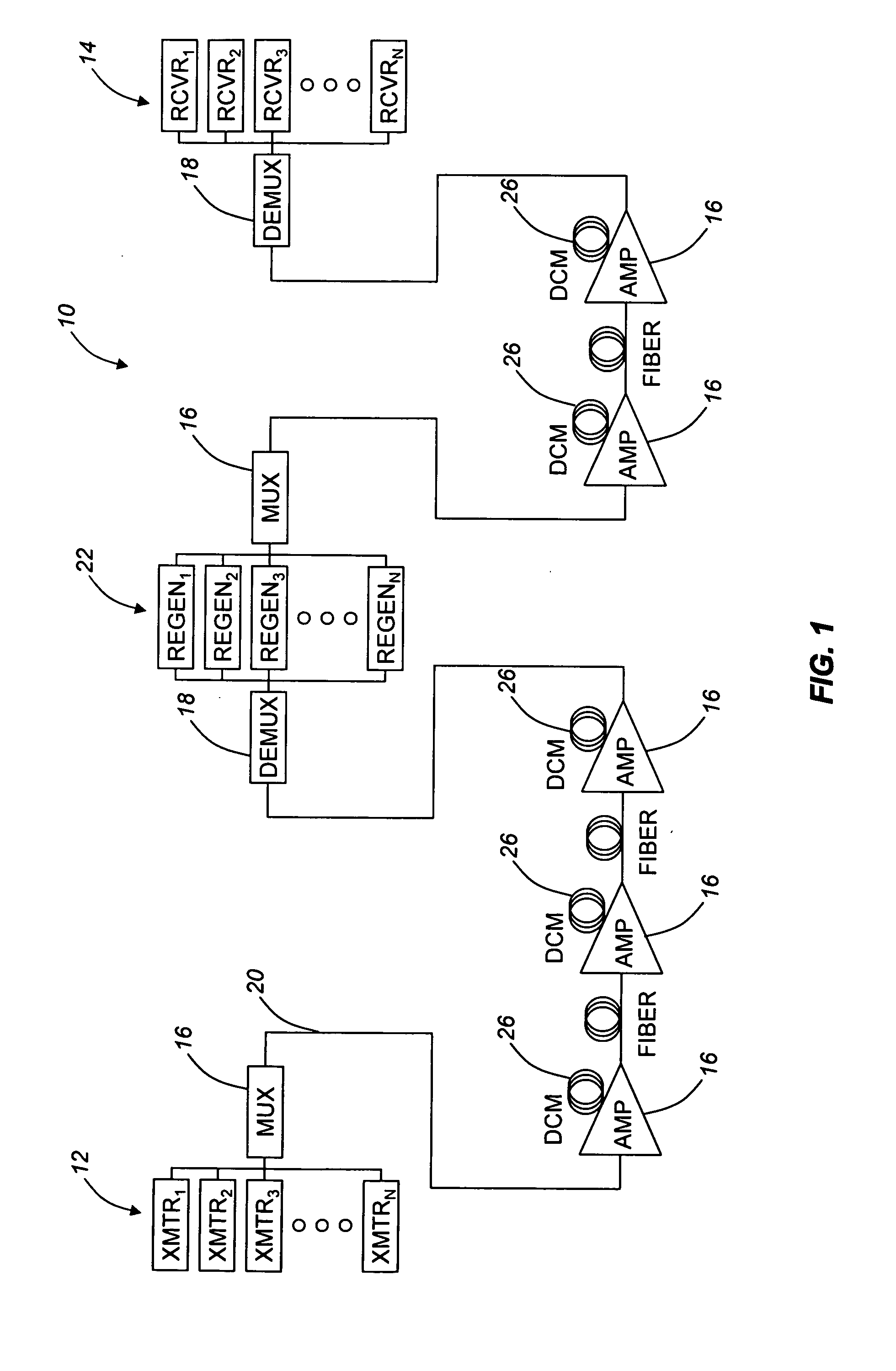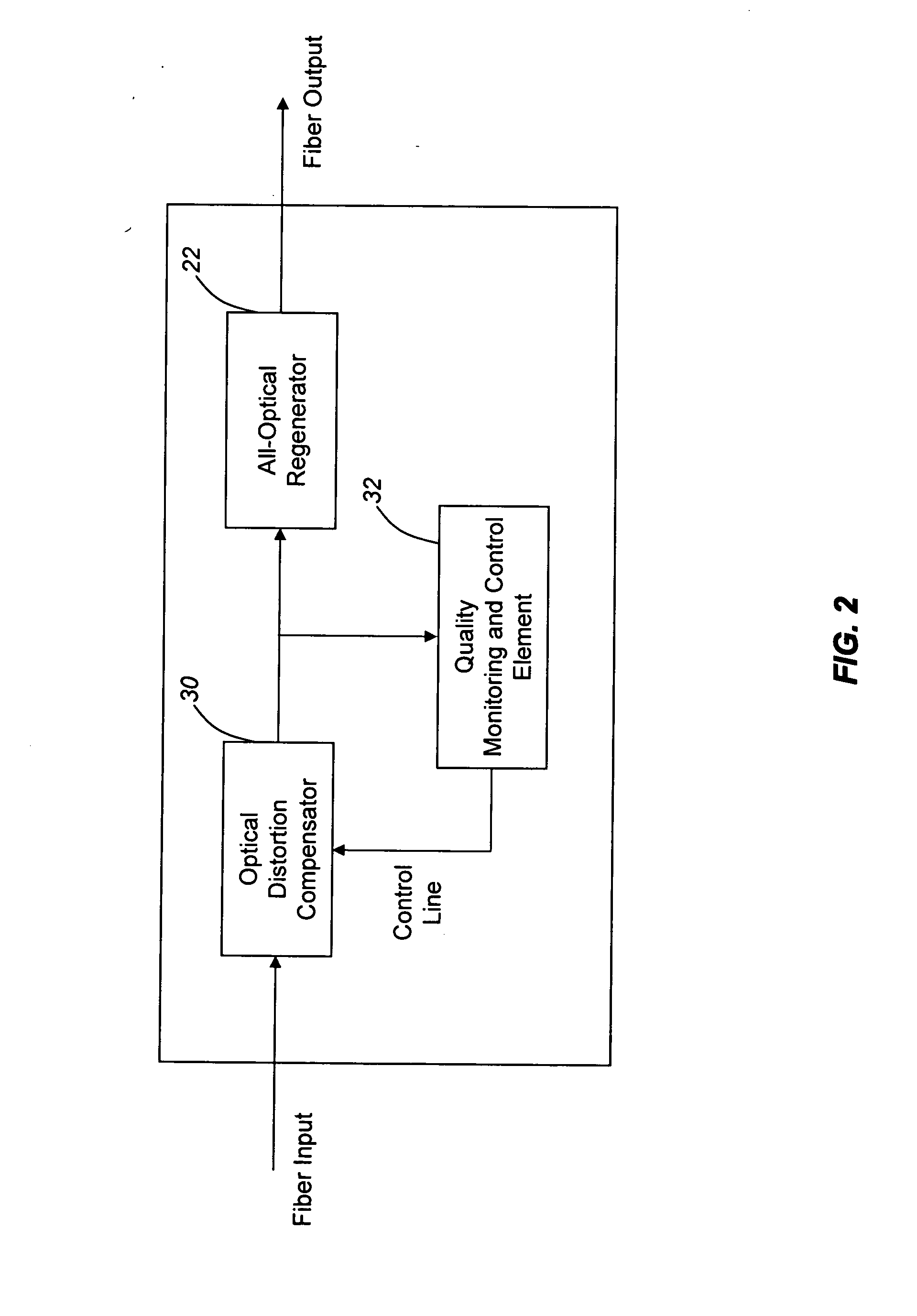All-optical regenerator and optical network incorporating same
a technology of all-optical regenerators and optical networks, applied in electromagnetic transmission, electrical equipment, transmission, etc., can solve the problems of increasing complexity and sophistication of optical networks, affecting the operation of aors, so as to reduce size, cost, power consumption, and complexity. , to achieve the effect of reducing noise and distortion, reducing complexity and complexity
- Summary
- Abstract
- Description
- Claims
- Application Information
AI Technical Summary
Benefits of technology
Problems solved by technology
Method used
Image
Examples
Embodiment Construction
[0017]Typically, a regenerator node must eliminate signal noise and distortion through its re-amplify and re-shape (2R) functionality. Optionally, the regenerator node also provides a re-time (3R) functionality. Preferably, however, the regenerator node further provides a data or signal quality monitoring functionality for tunable distortion compensation, as well as a data or signal quality monitoring functionality for fault isolation and correction switching mechanisms.
[0018]All-optical regenerators may be based on several principles, as described below. For example, all-optical regenerators may be based on cross-gain modulation (XGM), cross-phase modulation (XPM), or four-wave-mixing (FWM) in semiconductor optical amplifiers. Alternatively, all-optical regenerators may be based on nonlinear effects in optical fibers. In general, all-optical regeneration is a process that removes the noise from optical signals and restores the optical signals to well-defined levels for further tran...
PUM
 Login to View More
Login to View More Abstract
Description
Claims
Application Information
 Login to View More
Login to View More - R&D
- Intellectual Property
- Life Sciences
- Materials
- Tech Scout
- Unparalleled Data Quality
- Higher Quality Content
- 60% Fewer Hallucinations
Browse by: Latest US Patents, China's latest patents, Technical Efficacy Thesaurus, Application Domain, Technology Topic, Popular Technical Reports.
© 2025 PatSnap. All rights reserved.Legal|Privacy policy|Modern Slavery Act Transparency Statement|Sitemap|About US| Contact US: help@patsnap.com



